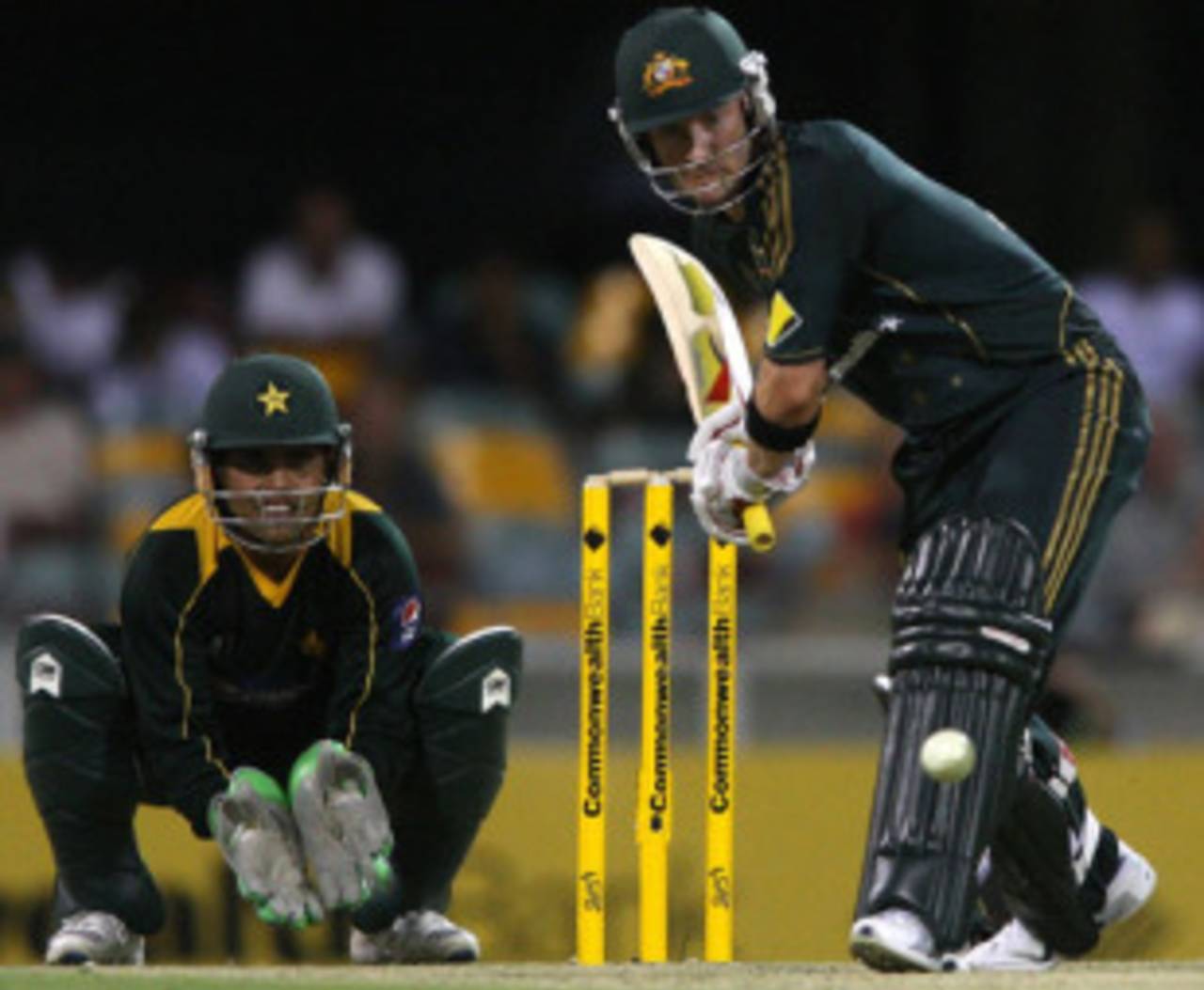To the pickets, with love
Batting is a business of quandaries and possibilities
Christian Ryan
25-Feb-2013

Using his feet: Michael Clarke • Getty Images
Batting is a business of quandaries and possibilities. Just occasionally, in the seconds before a spinner who flights the ball lets go, the possibilities hover at your lips yet out of tongue’s grasp. And the quandary is clear-cut. Do you dance? Do you stay? Dance and you might turn the ball, another budding ball of the century for all anyone knows, into a full toss by the bowler and four runs for you. Stay and you are safe: comforting, quiet, keep-that-shoe-behind-the-popping-crease safe. The ones who bat with a sort of love in their hearts, who see that it’s a game and that a game must involve chance, they dance.
This summer’s climactic high point could come as soon as next Thursday: the moment Graeme Swann bowls for the first time to Michael Clarke. Swann is a flighter. Clarke is a dancer. Together they land us back in 1904, cradling lit stoves in our laps to keep warm. Should everything go right for Swann, England will probably retain the Ashes. If nothing much goes wrong for Clarke, the destiny of the Ashes will temporarily stop mattering. For those hours, or minutes, batting will cease being a business and become something like a painting in an art exhibition. Sometimes, when Clarke’s feet win the race and the fielders freeze stock-still as the ball goes skimming to the pickets, it will feel like the entire six-storey gallery.
Other times his feet are not fast enough. He is unable to get to the ball before it bounces or on the half volley. So he pats it away. Still he has won the contest. For the next delivery, nearly every time, is shorter, and flatter. This allows Clarke to step back and cut – the stroke he considers his most important against the spinners. And the ball after that, the quandary is the bowler’s. Does he loop it? Does he zip it? Nothing is working. All this hails from that one moment’s acceptance of chance. Two balls later Clarke is still savouring the rewards.
That he bats this way in an era when few others do is partly a happy accident of upbringing. His dad Les owned an indoor centre, and the rules of indoor cricket say that when you hit a ball you must run, so if young Michael came dancing at the bowler he was already halfway down to where he had to end up. This, though, does not totally explain things. For in the years since then Clarke has gone to the trouble of tightening certain other screws in technique: an intermittently outlandish shot selection; a little boy’s reluctance, like a pelican unable to ignore a fish, to let a ball sail harmlessly past him. Yet somewhere along the line he made a conscious, maybe an unconscious, choice to keep the razzle-dazzle in his feet when the spinners are on.
I saw him play his first couple of summers for New South Wales, when the screws were still loose and whirred round and round and sometimes came careering right off. I was living in Sydney. I’d keep one eye on Cricinfo. If Clarke was due in soon, I caught a bus across town and stayed for however long he lasted. I interviewed him on a concrete step beside the SCG practice nets. He was wearing sunglasses. The sunglasses were not only enormously cool but unfeasibly enormous. Only twice did he take them off – to scratch an itchy nose. These sunglasses were so big that he couldn’t get at his nose without lifting them up.
And already, just 21, he was twittering on about himself in the third person. “Michael Clarke, blah.” “Michael Clarke, bang.” Nowadays he not only twitters but tweets. In photo-shoots he dons low-cut black tank tops that let his tattoos and muscles bulge out. Some people get annoyed about this. Their reservations crumble to so much damn dust the moment any serious heat is applied to them. Long after the pecs have slunk from memory, people will talk about the feet.
Those early summers, watching him dance not merely to the spinners but to the fast men as well, I thought of Trumper. I thought of McCabe. Now, once Clarke is set at the crease and flowing, I think of a right-handed Neil Harvey. Graceful, thrilling and it’s gunna take a couple of sticks of dynamite to shift those bails. If Hell’s XI selected a quartet of spinners, Clarke might be one of the first men picked in heaven.
A batsman with a calculator for a brain does not bat like that. You do not bat like that if, when you ponder a day’s cricket, you plot how many runs you might tot up and how many black-label whisky sponsorship dollars all those runs will translate into. Something in the heart – a love of the game, of its myriad possibilities – makes you bat the way Clarke does.
Love might one day turn Clarke into a good, perhaps excellent, possibly outstanding captain of Australia. Ah yes, you think, when you catch him on TV captaining a side, here is someone with a feel for cricket, with some innate sense of its rhythms, who knows when to bring a fieldsman in, or swing the bowlers round, or pluck a diamond out of his pocket. And you think: at last! Here is the man for whom cricket in Australia has been waiting.
Christian Ryan is a writer based in Melbourne. He is the author of Golden Boy: Kim Hughes and the Bad Old Days of Australian Cricket and, most recently Australia: Story of a Cricket Country